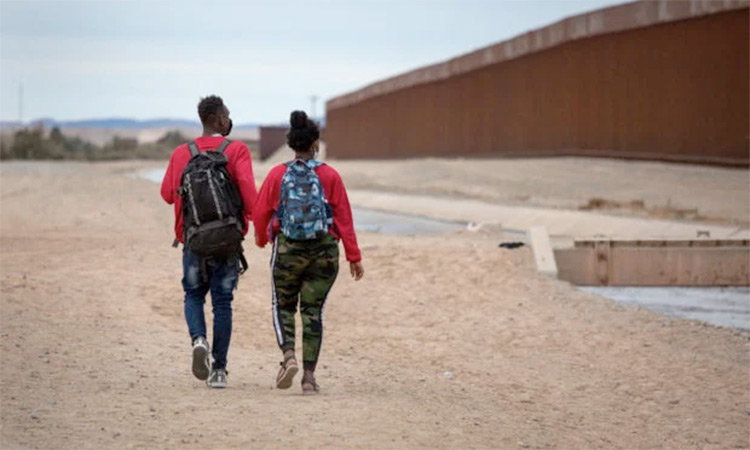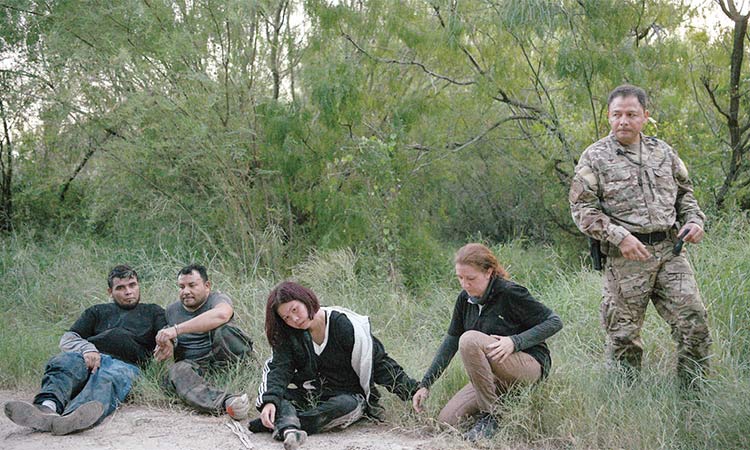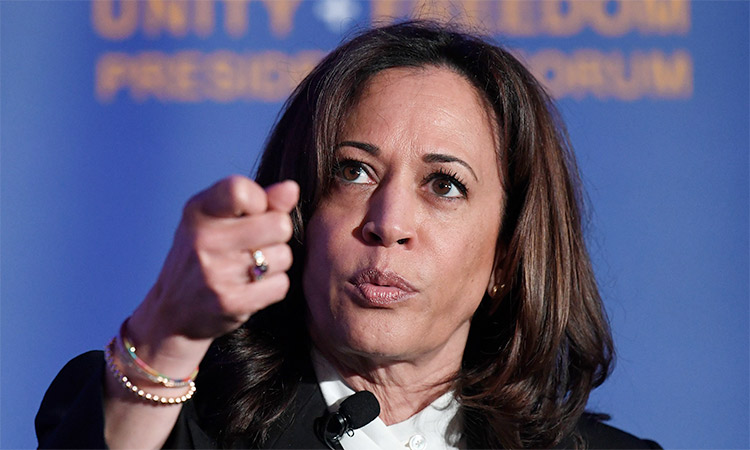Little or no hope for thousands stranded at border

A Honduran migrant boy stands next to his father waiting for their court hearing in Ciudad Juarez, Mexico. Reuters
Molly Hennessy-Fiske, Tribune News Service
The young Honduran woman hoped to enter the United States through Brownsville, Texas, but she was among thousands of asylum seekers at the US-Mexico border who could not be sure what might happen next.
Melisa said she and other migrants had crossed through two or more countries on their way north, but she did not feel safe seeking asylum in any of them.
“We are not safe either in Honduras or in Mexico,” said the 27-year-old, who asked to be identified by her first name only after fleeing death threats in Honduras. “The only country that can give me my freedom of expression, my personal freedom and my security, is the United States.”
The Trump administration said that starting Tuesday it would deny asylum to migrants who failed to apply for protection in at least one country they crossed on their journey north. Under the new rule, Hondurans and Salvadorans would have to apply and be denied asylum in Guatemala or Mexico before they were eligible in the US; Guatemalans would have to apply and be denied asylum in Mexico.
The Border Patrol has caught 363,300 Central American family members at the Mexican border since the fiscal year started in October, many seeking asylum. As asylum seekers wait, they have set up camps in Mexican border cities that include African, Cuban and Haitian immigrants — all of whom would be barred from applying for asylum under the Trump administration’s new rule.
Jennifer Quigley, director of refugee advocacy at Human Rights First, said the new asylum rule appeared to apply only to asylum cases filed Tuesday onward, not to the roughly 20,000 asylum seekers already in the “Remain in Mexico” program. The Trump administration created the programme this year, forcing some asylum seekers to wait in Mexico while their cases proceed in US immigration court, returning only for court hearings.
While decisions in asylum cases can take years because of a nationwide backlog, Quigley said that in Mexico, “They have their own backlog.” The Mexican government has worked with the United Nations to improve its asylum system, but applications this year were expected to reach 60,000, up from 15,000 two years ago.
Jodi Goodwin, a South Texas lawyer working with asylum seekers, visits Matamoros weekly and said it was unclear how the new rule would affect asylum seekers, some of whom have been returned to Mexico while their cases proceed in US immigration court under “Remain in Mexico.”
“I’m assuming there’s going to be additional guidance put out. Who’s going to make these exception determinations? Is it going to be asylum officers?” Goodwin said of the new asylum rule.
Goodwin had heard from immigration and civil rights lawyers strategizing about how to fight the new policy. She had also spoken to immigrants who had decided to cross the Rio Grande illegally, despite months of waiting and several recent deaths of migrants parents and children attempting to cross the river illegally.
“There were lots of people intimating to me that they were crossing. They’re tired of changes in the policies when they’re legitimately waiting for months,” Goodwin said.
The influx of 688,375 migrants at the border this year has largely come from Central America, and most went to Texas. In Texas’s Rio Grande Valley, the busiest stretch of the border for illicit crossings, 43,197 migrants were caught attempting to illegally enter last month, almost triple the number caught in the same area in June 2018, according to the Border Patrol.
In El Paso, another hot spot, Border Patrol caught 18,878 migrants attempting to cross illegally last month, more than five times as many as the previous June. Shelters have become crowded this year on both sides of the border, with at least 1,500 migrants waiting to cross the border legally from Juarez this week.
Buen Pastor shelter in Juarez was housing 105 migrants this week, about a quarter of them children, some from southern Mexico, others from Central America, South America and Africa, said the shelter’s director, Rev. Juan Fierro Garcia. Garcia said it wasn’t clear how the new policy would impact asylum seekers who had been issued dates when they were expected to appear in US immigration court in El Paso.
“They have not really warned us,” he said of US and Mexican officials.
Garcia worried that African migrants who have been waiting the longest at his shelter could protest at the border bridge or cross the river illegally, as they have seen others do.
“They are here waiting for a month, two months three months, waiting for their turn, wanting to do things in order, and now it gets complicated. Maybe many of them will say ‘Why don’t we just skip the line?’ because many skipped and already have their appointments” to apply for asylum, he said.
Cuban migrant Pedro Ruiz Tamayo was waiting at Buen Pastro shelter Tuesday. A member of the political opposition in Havana, Ruiz Tamayo said he initially fled to Brazil two years ago and applied for asylum, but abandoned his application in December and headed north to Juarez.
“You’re looking for the place where you feel safe and for me the place, the world’s safest place, is the US,” said Ruiz Tamayo, 50. “I came to ask for political asylum in the United States.
“I did not come to ask for asylum in Honduras, I did not come to ask for asylum in Guatemala. They are countries that are full of evil, full of violence.” Tamayo said. “I did not come to ask for asylum in Mexico, a country that we all know has embraced us but we know that at the moment they are one of the most violent countries in the world.”
He followed news reports about the new asylum policy, including vows by US lawyers to take action to block it, and said that gave him hope.
“I left in search of American democracy. I trust in American democracy,” he said. “I have faith because I’m in the door. I’m just going to wait for it to open, I’m not going to enter the courtyard or through the window. I want to enter through the door. I have fought it hard to do things right. I’ve been here for three months now and if I have to wait three more, I’ll wait.”







